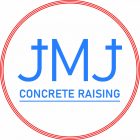Concrete Leveling Services
Two of the most common methods of concrete repair in fixing these scenarios are mud jacking and polyjacking. This method has been repairing concrete driveways, sidewalks, patios and parking lots
We are here to Help You! Fast & Reliable Service

Sidewalk Repair and Leveling
An uneven sidewalk not only looks bad, but it creates a tripping hazard. If the concrete slab is still intact, don’t waste your money on replacing the concrete.

Driveway Repair and Leveling
If your home has sloped floors, cracks in floor tiles, gaps below baseboards, gaps at the tops of walls, or sticking doors, you might have a concrete settlement problem.

Garage Floor Repair
If you have a sunken or uneven driveway, replacing it might not be the most cost-effective option. We can use PolyLevel® concrete to raise the concrete, create an even surface, and prevent further sinking and cracking.

Concrete Raising
When you’re dealing with cracked, settling, or uneven concrete, you have two options: replace the slab or invest in concrete repair services like concrete leveling.

Concrete Pool Mudjacking
Has your concrete pool deck seen better days? Worried about the cracked, uneven deck causing tripping hazards?

Patios, Porches & Landings
You shouldn’t have to worry about tripping on uneven concrete when relaxing on your patio. You might also notice your table and chairs wobbling because of uneven concrete.

We're here to help! Call Us Today!
Concrete Leveling
Concrete is a composite material composed of fine and coarse aggregate bonded together with a fluid cement (cement paste) that hardens (cures) over time.
Slabjacking
“Slabjacking” is a specialty concrete repair technology. In essence, slabjacking attempts to lift a sunken concrete slab by pumping a substance through the concrete, effectively pushing it up from below. The process is also commonly referred to as “mudjacking” and “pressure grouting.”
Accounts of raising large concrete slabs through the use of hydraulic pressure date back to the early 20th century. Early contractors used a mixture of locally available soils (sometimes including crushed limestone and/or cement for strength), producing a “mud-like” substance and thus the term “mudjacking.” In recent years, some slabjacking contractors began using expanding polyurethane foam. Each method has its benefits and disadvantages.
Causes of settlement
Concrete slabs can be susceptible to settlement from a wide variety of factors, the most common being an inconsistency of moisture in the soil. Soil expands and contracts as the levels of moisture fluctuate during the dry and rainy seasons.
